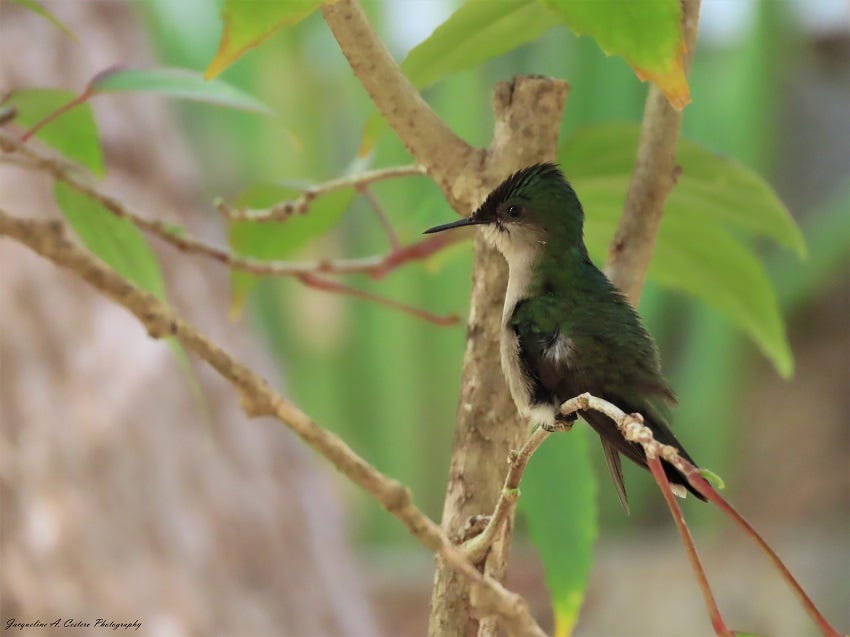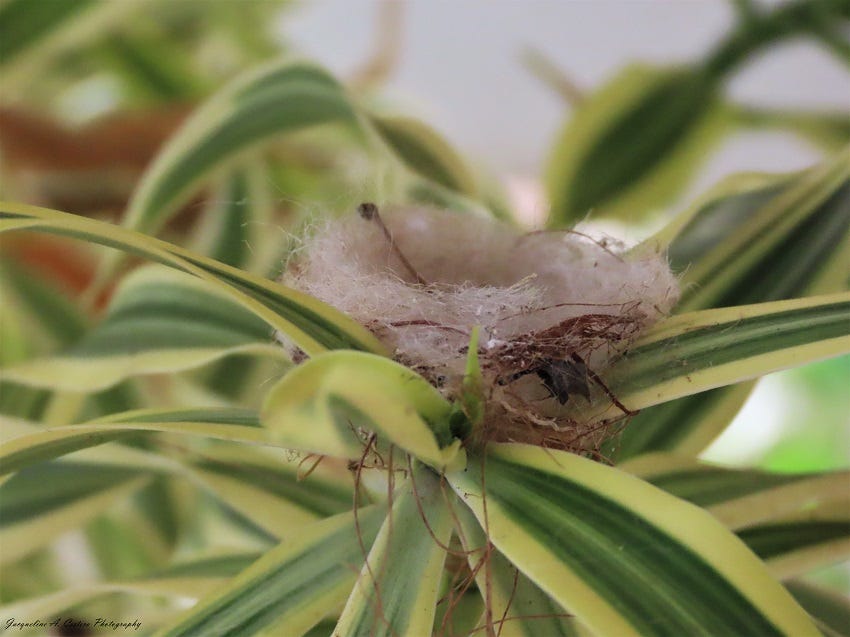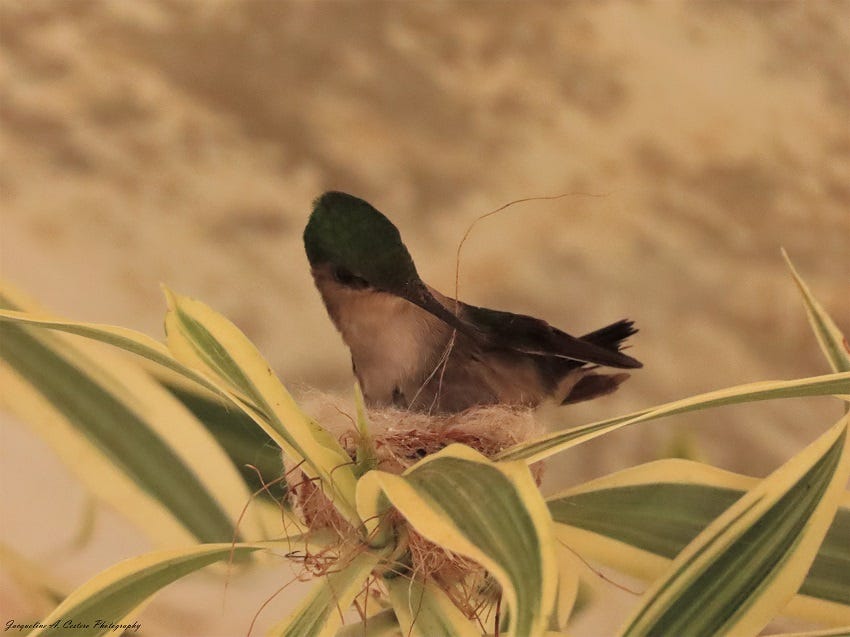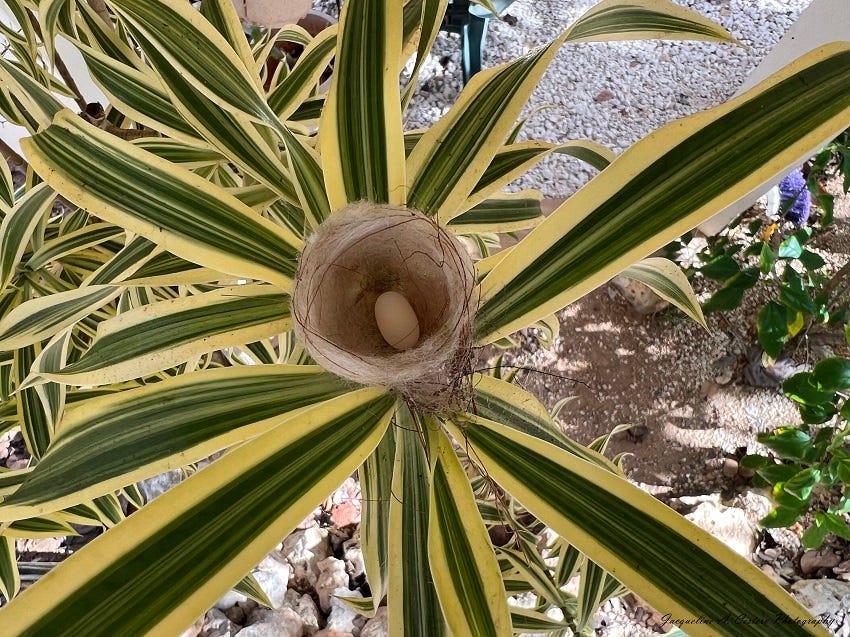To say that “Itty Bit” and I are close is an understatement. We have been through five nesting seasons and a pandemic together. I have been with her through good times when she successfully raised her chicks. And the bad when she lost them. She last nested in 2021, losing both chicks to a violent wind storm just days before fledging. I buried them as she looked on from a branch above.
In 2020 at the height of the pandemic, her nest carried me through. Her two beautiful chicks gave me hope as they left the nest and started a new life.
“Itty Bit” is the fourth of Anguilla’s five Lesser Antilles Restricted Range Species - the Antillean Crested Hummingbird. This resident species was severely impacted by Hurricane Luis in 1995. Over the last 15 years, the population has rebounded and is widely distributed across Anguilla.
While she seemingly sat out the 2022 breeding season, “Itty Bit” is back to try again in 2023.
Wednesday, April 5, 2023, she began hanging around her usual nest sites. She enjoys one of my orchid plants and a bush under the stairs. The Lesser Antillean Bullfinch pair invaded the orchid, so she returned to the bush.
I did not follow her for a few days due to rain storms and holiday festivities. On Tuesday, April 11, 2023, I found the partially completed nest in the photograph above.
By the morning of the 12th, the nest cup had become more structured. She was guarding the site against other birds, especially the Pearly-eyed Thrasher, who seemed to find a way to pass her nest with the precision of a fighter pilot.
The female Antillean Crested Hummingbird is responsible for site selection and nest building. It takes between five and seven days to construct the nest.
Birds of the World provides the following details:
“Breeds all year round, chiefly Mar–Jun. Nestvideo cup-shaped, built on thin branch of shrub or vine 1–3 m above ground, often shaded by leaves. Nest interior lined with soft plant fibre, outside decorated with pieces of dead leaves, lichensvideo , moss or bark.”
In the nest photograph below, you can see that she used some palm tree fibers that line the orchid box of her old nest site.
She uses her bill to place the fibers and weave the nest in place carefully. She completes the nest with cotton lining the bottom and fiber threads around the outside.
After what seemed to me to be an eternity, she laid her first egg on April 17, 2023. At this point, she stepped up her nest-guarding routine. One pesky Bananaquit routinely fed nearby, and she would have none of it.
I expected the second egg to appear the next day, but nothing happened. She busied herself around the garden and continued to guard the site. She sat on the nest in short intervals. She was always aware if another bird was too close to the nest. She would arrive like a missile and chase the intruder away.
Egg number two finally appeared on the morning of April 19, 2023. I caught the glimpse above as she was off feeding on one of the flowers in the garden. It was a relief to see that egg, honestly!
To put things into perspective, the nest is about the circumference of an Eastern Caribbean Dollar coin. The eggs are similar in size to Mini Jellybeans.
From now on, “Itty Bit” will leave the nest only for short periods to feed. With an incubation period of seventeen to nineteen days, we can expect the first egg to hatch about May 4, 2023.
Over the next several weeks, I will follow “IttyBit’s” breeding cycle. It is a journey that promises some ups and downs, but I hope you will join me. I will post interim reports on Substack Notes unless there is a significant development. My next post on this topic will be in early May.
In the meantime, I hope you will enjoy a few moments as she makes her nest a welcome home for her eggs.












So beautiful! Is rotating on the nest part of the process or was she just fidgeting? Does she get any sleep??
This is a wonderful newsletter on Itty Bit. Wonderful she comes back each year.